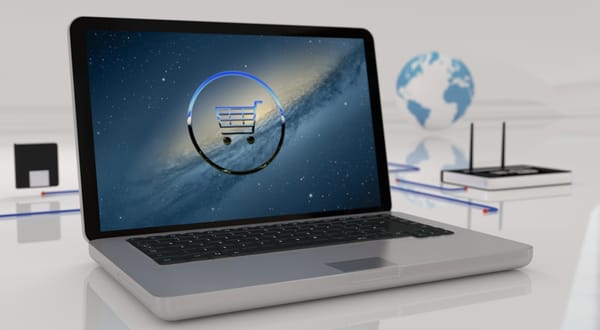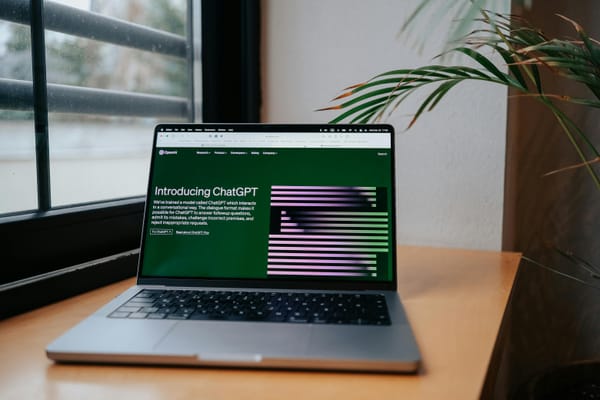How to Prevent Buy Now, Pay Later (BNPL) Fraud on Your eCommerce Site

Buy Now, Pay Later (BNPL) lets customers split payments into smaller chunks over time, often interest-free. It's fast, easy, and increasingly expected by online shoppers.
But where money flows quickly, fraud often follows. Criminals use BNPL to make unauthorized purchases, open fake accounts, or avoid paying back what they owe. In some cases, even real users or family members may misuse it.
As a small business owner running an online store, you need to understand how BNPL fraud works and what you can do to stop it before it damages your reputation or bottom line.
How Does BNPL Fraud Happen?
BNPL was built for speed and convenience. That's great for conversions — but it also leaves gaps fraudsters can exploit. Common tactics include:
- Using stolen login details to access a real customer's account
- Creating fake or "synthetic" identities to pass light checks
- Opening multiple accounts to take advantage of discounts and delay repayment
- Placing orders with no plan to pay, then disappearing
While many BNPL providers absorb financial losses, you still face lost inventory, chargebacks, and customer frustration — especially if they believe your site wasn't secure.
- How to Stop Chargeback Fraud from Hurting Your Small Business
- Stop Losing Money to Chargebacks: 10 Tips for Small Business Owners
Common Types of BNPL Fraud You Should Know
Here are the most common ways BNPL is abused — and what you can do about it:
1. Account Takeover Fraud
A scammer gets into a customer's BNPL account using stolen login info. They order products as if they're the customer — sometimes going undetected for days.
Protect yourself: Watch for logins from new devices or locations. Require confirmation if key details like passwords or emails are changed.
2. Synthetic Identity Fraud
Criminals combine real and fake data (e.g. real social security number + fake name) to create new "people" and open accounts.
Tip: Don't rely on one-time ID checks. Reverify identities over time, especially when orders change in size or frequency.
Related: 7 Types of Credit Card Fraud & How Your Businesses Can Avoid Them
3. New Account Fraud
Scammers open new accounts with stolen or fake info. They place orders fast, often using first-time buyer discounts, before getting blocked.
Protect yourself: Set spending limits for new users and watch for patterns like many accounts tied to the same IP or shipping address.
4. Trojan Horse Fraud
A fraudster sets up a BNPL account using fake details, places an order, then quietly switches the payment method to a stolen credit card. It can take a while to spot.
5. Refund Abuse / Friendly Fraud
A customer falsely claims they never made a purchase or requests a refund without returning the product.
Tip: Use clear transaction labels and order confirmation emails that show the business name, product, and contact info. Offer fast customer support to resolve confusion.
6. Repayment Fraud
The fraudster pays back a BNPL loan — but using stolen card details. The payment looks legit until the real cardholder disputes it later.
Prevention is tough, but tracking patterns like frequent repayments from new cards may help.
Related: What is a BIN Attack and Why Is Your Very Small Business at Risk?
Who Is Liable for BNPL Fraud?
In most cases, it's the BNPL provider who takes the financial hit. Since they approve the payment and manage the transaction, they're usually responsible for covering any losses. But that doesn't mean your business is safe from the fallout.
If fraud happens through your site, you could still lose the products, damage your relationship with the customer, or even risk being dropped by your BNPL provider if they consider your store too risky.
The impact doesn't stop there. For your customers, BNPL fraud can lead to unauthorized charges, lost money, and harm to their credit score. And if they think the issue came from your website, there's a good chance they won't shop with you again.
As a business owner, the consequences can be just as serious. You might face negative reviews or backlash on social media, an increase in chargebacks, and a loss of trust from your loyal customers. Over time, this can also make it harder to work with BNPL providers who expect their retail partners to have fraud risks under control.
Warning Signs of BNPL Fraud
Here are a few red flags worth watching:
- Large or multiple orders from new customers
- Logins from strange IP addresses or far-off countries
- Quick changes to passwords or contact info before a purchase
- The same shipping address tied to multiple accounts
- Refund requests without returned products
How to Protect Your Business From BNPL Fraud
Here's what small business owners can do — even without big budgets or teams:
1. Choose a reliable BNPL provider
Pick a provider that offers built-in fraud tools, strong ID verification, and real-time decision-making. Ask if they monitor transactions or use behavioral data to flag suspicious orders.
2. Don't assume the BNPL company catches everything.
Use tools to flag risky patterns — like repeated logins, mismatched addresses, or multiple failed payments.
3. Limit new customer risk
Set conservative order limits for brand-new accounts or those without a purchase history.
4. Use multi-factor authentication
Ask customers to verify their identity when logging in or checking out — especially for saved accounts or big orders.
5. Be proactive with refunds
Make refund policies clear and consistent. Use detailed invoices and quick responses to avoid chargebacks from "friendly fraud."
6. Recheck identity if behavior changes
If a long-time customer suddenly starts ordering unusually large items or changes their contact info, pause and review their account.
7. Stay on top of regulations
BNPL rules are changing fast, especially in the UK and EU. Ensure your provider can handle compliance without compromising your conversion rates.
What to Do If You Suspect BNPL Fraud
- Don't ship the order yet. Flag it for review and contact the customer or your BNPL provider.
- Report the fraud. Your BNPL partner may be able to freeze the account or stop the payment.
- Check your site security. Look for leaks, outdated plugins, or weak password policies.
- Document everything. If the fraud is reported to the authorities, you'll need a full record.
- Learn from it. Use the case to update your filters or customer policies.
Offering Buy Now, Pay Later can be a smart way to boost sales and attract new customers—but it also opens the door to new types of fraud that small businesses can't afford to ignore. The risks are real, but the solutions are within reach.
By choosing the right BNPL partner, setting up basic security checks, and staying alert to suspicious activity, you can prevent most BNPL fraud before it starts. These small steps can make a big difference in protecting your business, your inventory, and your customer relationships.
If you want to take protection a step further, Bitdefender Ultimate Small Business Security can help. It's designed specifically for small businesses with up to 25 employees—so it's powerful, but easy to manage.
You get advanced threat protection to block malware and phishing scams, a secure VPN for safe browsing, and smart fraud detection tools powered by AI. It also helps prevent chargebacks linked to account takeovers, fake orders, or stolen payment info—all without slowing your site down or adding extra work for your team.
Cybersecurity doesn't have to be complicated. With the right tools in place, you can focus on growing your business—while we help take care of the threats trying to slow you down.
Check out our plans for small businesses.
FAQs
What is BNPL fraud?
BNPL fraud happens when someone misuses the Buy Now, Pay Later payment option to make unauthorized purchases or avoid repayment. It can involve fake accounts, stolen identities, or refund abuse.
How can I tell if someone is committing BNPL fraud on my site?
Watch for unusual behavior like multiple large orders from new customers, logins from different locations, sudden account changes, or mismatched billing and shipping info.
Who pays for BNPL fraud losses?
In most cases, the BNPL provider covers financial losses. However, your business still risks losing products, damaging customer trust, and getting flagged as a high-risk merchant.
Can small online stores prevent BNPL fraud?
You can reduce risk by working with a reliable BNPL provider, adding ID checks, setting limits for new accounts, and using two-factor authentication at checkout.
Does BNPL fraud affect my customers?
Customers can lose money, have their credit damaged, or stop trusting your store if fraud happens through their account.
tags
Author
Cristina is a freelance writer and a mother of two living in Denmark. Her 15 years experience in communication includes developing content for tv, online, mobile apps, and a chatbot.
View all postsRight now Top posts
Scammers Sell Access to Steam Accounts with All the Latest Games – It's a Trap!
May 16, 2025
FOLLOW US ON SOCIAL MEDIA
You might also like
Bookmarks







